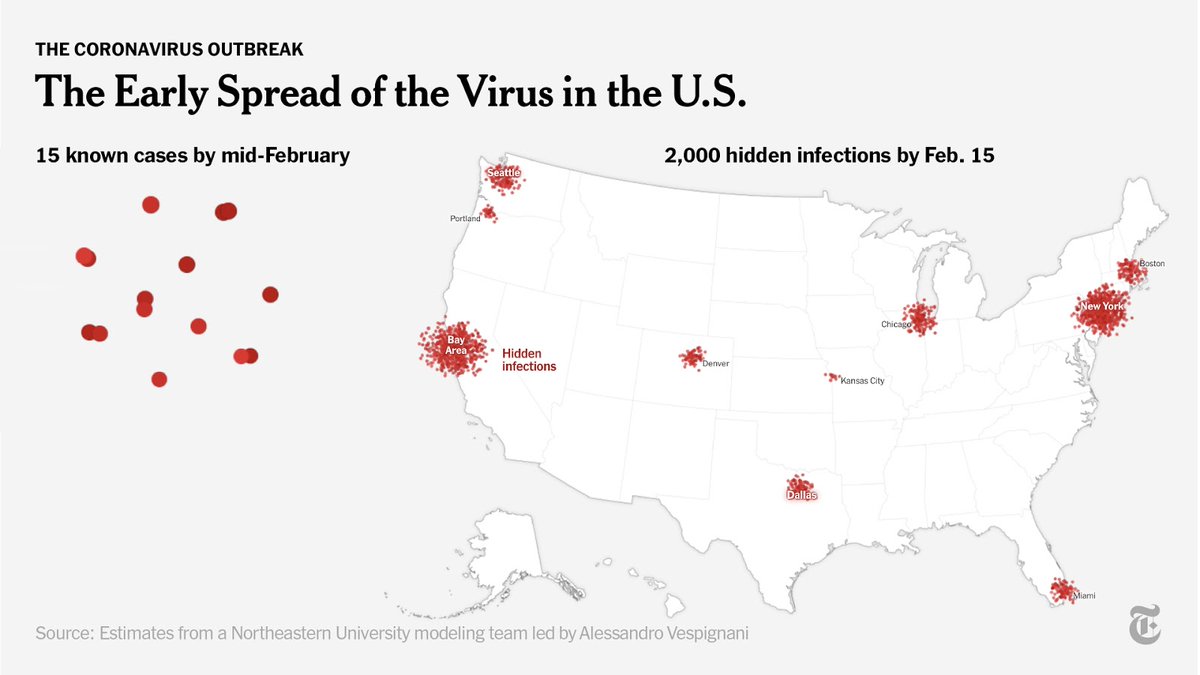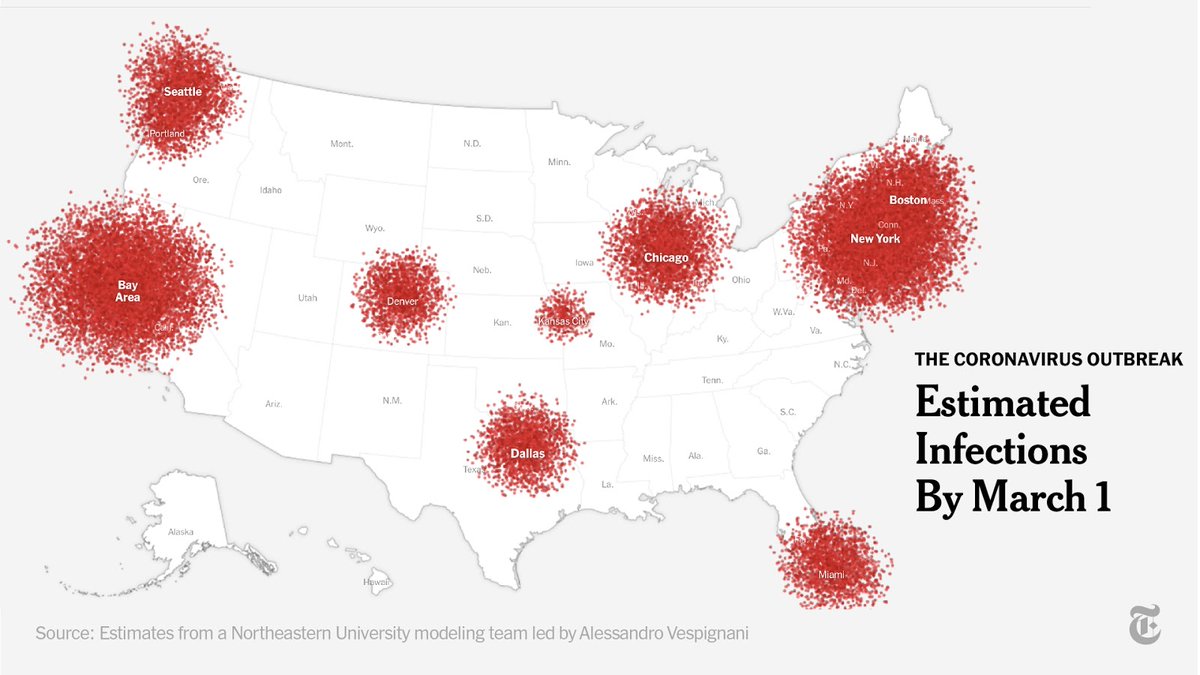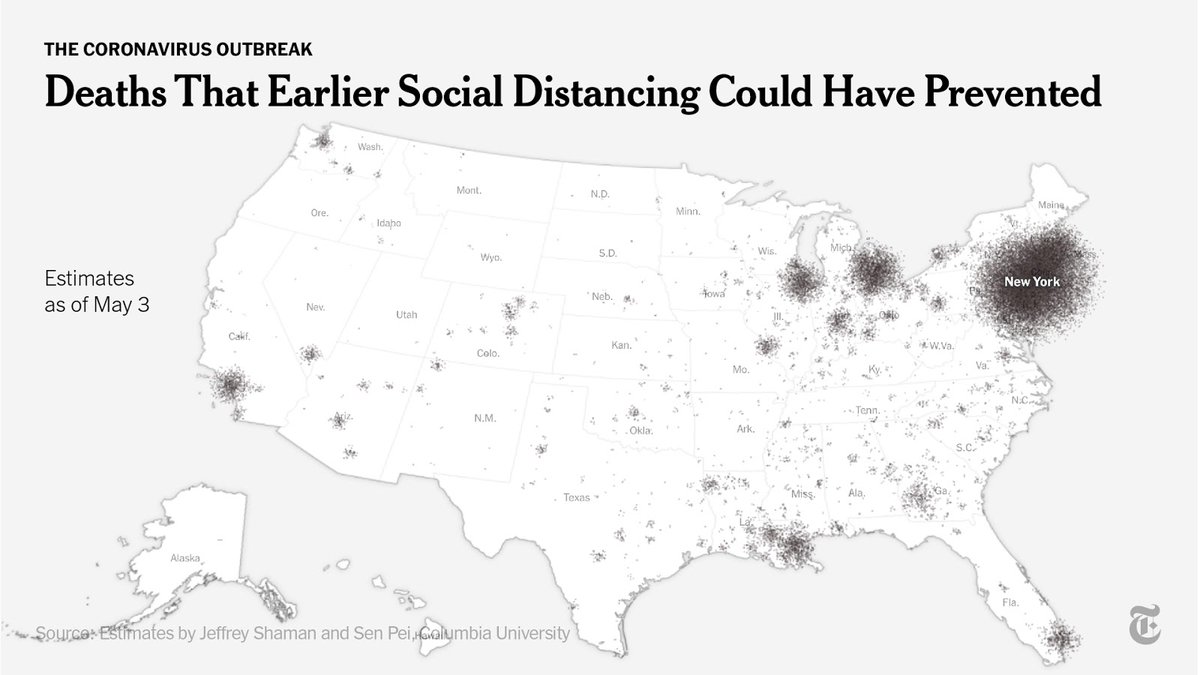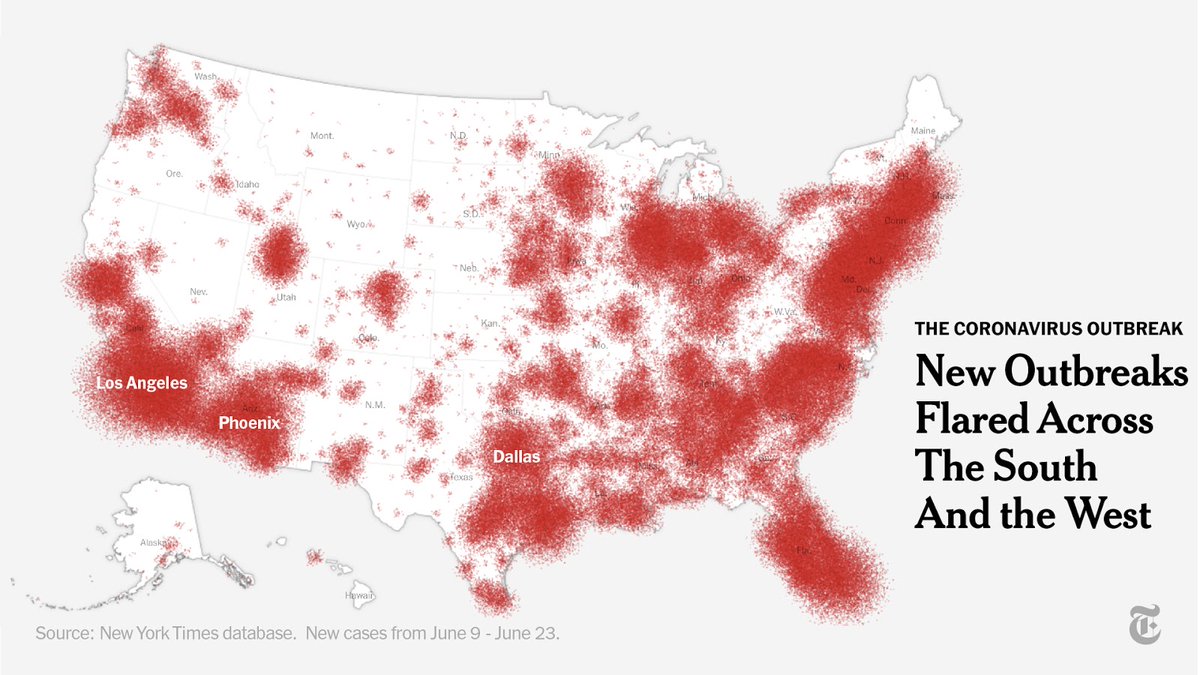By the time the U.S. had 15 known coronavirus cases, some 2,000 invisible infections were already spreading through major cities.
We tracked how the virus spread. What we found shows how officials’ delayed response likely cost tens of thousands of lives. https://nyti.ms/2YyocPr
We tracked how the virus spread. What we found shows how officials’ delayed response likely cost tens of thousands of lives. https://nyti.ms/2YyocPr
We analyzed travel patterns, hidden infections and genetic data to show how the epidemic spun out of control in the U.S. — and why, by the time officials responded, it was already too late. http://nyti.ms/2YyocPr
By mid-February, infections brought from overseas caught fire and became outbreaks, spreading invisibly.
But there were only enough working tests for those who had visited China or had contact with known cases.
Then the outbreaks doubled — and doubled 3 more times by March 1.
But there were only enough working tests for those who had visited China or had contact with known cases.
Then the outbreaks doubled — and doubled 3 more times by March 1.
In early March, millions were still moving across the U.S. Some unknowingly carried the virus with them.
In Seattle, people made about 4.3 million trips from the area. Thousands were contagious — researchers linked genetic samples in 14 states back to the Seattle outbreak.
In Seattle, people made about 4.3 million trips from the area. Thousands were contagious — researchers linked genetic samples in 14 states back to the Seattle outbreak.
Seattle was just the beginning. In New York City, where there was one known case by March 1, roughly 10,000 infections had spread undetected.
New Yorkers and others continued to travel: More than 5,000 contagious people left in the first 2 weeks of March, estimates suggest.
New Yorkers and others continued to travel: More than 5,000 contagious people left in the first 2 weeks of March, estimates suggest.
Researchers used genetic mutations to estimate the influence of early outbreaks.
Early on, variants prominent in Seattle’s outbreak were found more frequently in samples.
Later samples showed that by May 1, a variant found often in New York City’s outbreak was more widespread.
Early on, variants prominent in Seattle’s outbreak were found more frequently in samples.
Later samples showed that by May 1, a variant found often in New York City’s outbreak was more widespread.
By March 13, when President Trump blocked travel from Europe, the U.S. outbreak had been spreading for weeks.
A woman at Mardi Gras in New Orleans returned to Memphis and became the city's first known case there. The New Orleans outbreak helped seed infection across the South.
A woman at Mardi Gras in New Orleans returned to Memphis and became the city's first known case there. The New Orleans outbreak helped seed infection across the South.
Here's how, for most of March, Americans continued to travel as normal as the coronavirus spread.
It wasn't until March 24 that much of the country shut down — stopping the exponential growth of the virus from overwhelming many parts of the country. http://nyti.ms/2YyocPr
It wasn't until March 24 that much of the country shut down — stopping the exponential growth of the virus from overwhelming many parts of the country. http://nyti.ms/2YyocPr
Where measures were taken relatively quickly — including in San Francisco and Seattle — new cases slowed.
But in New York City, the response was too late. Other factors, such as the city’s density and its rate of international travel, also may have played a role.
But in New York City, the response was too late. Other factors, such as the city’s density and its rate of international travel, also may have played a role.
More than 22,000 lives could have been saved in the New York City area if social distancing had started just one week earlier, Columbia University researchers estimate.
Across the U.S., that number is 36,000, the estimates say. http://nyti.ms/2YyocPr
Across the U.S., that number is 36,000, the estimates say. http://nyti.ms/2YyocPr
How the coronavirus spread in the U.S. is just part of the story. We also analyzed how it was able to spread from China and become a pandemic.
Here's why the most extensive travel restrictions to stop an outbreak in human history weren't enough. https://nyti.ms/2A3Glvf
Here's why the most extensive travel restrictions to stop an outbreak in human history weren't enough. https://nyti.ms/2A3Glvf
America is still in the dark.
Most infected people are never tested. There is little capacity to trace and isolate the contacts to those who do test positive.
As lockdowns expire, new cases have spiked, with new outbreaks in the South and the West. http://nyti.ms/2YyocPr
Most infected people are never tested. There is little capacity to trace and isolate the contacts to those who do test positive.
As lockdowns expire, new cases have spiked, with new outbreaks in the South and the West. http://nyti.ms/2YyocPr
These are only the cases we know about. No one can see where the coronavirus will go next.
See our full investigation of how U.S. officials’ slow response failed to stop the virus. http://nyti.ms/2YyocPr
See our full investigation of how U.S. officials’ slow response failed to stop the virus. http://nyti.ms/2YyocPr

 Read on Twitter
Read on Twitter






